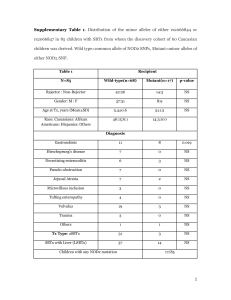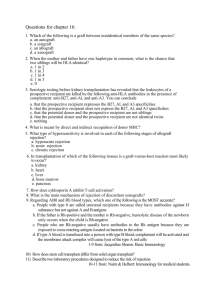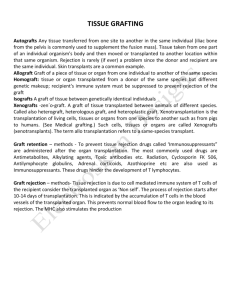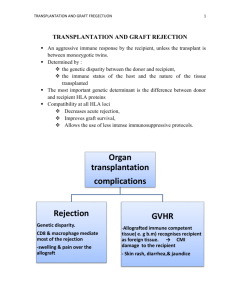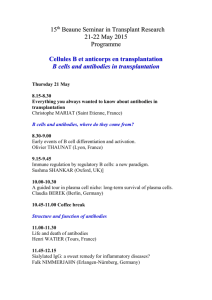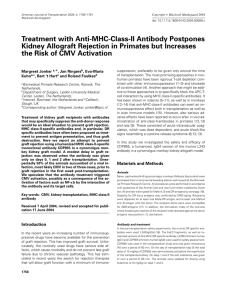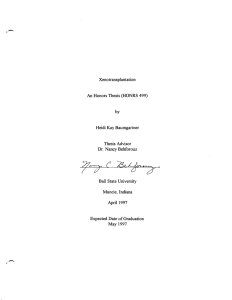Composite tissue Allografts
advertisement
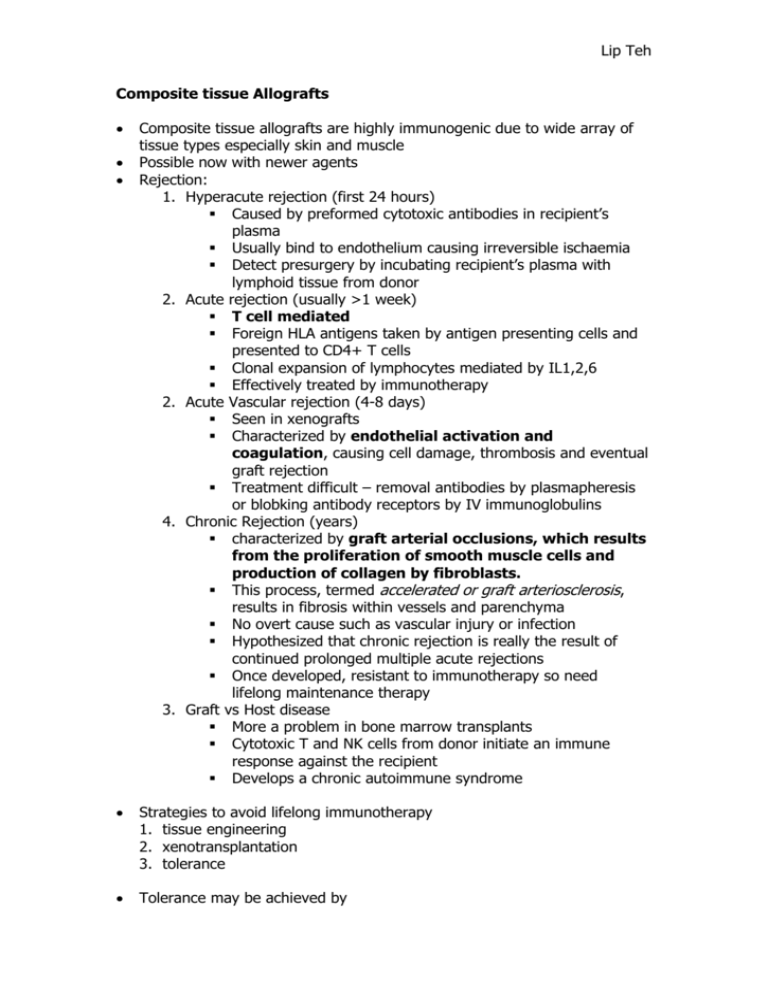
Lip Teh Composite tissue Allografts Composite tissue allografts are highly immunogenic due to wide array of tissue types especially skin and muscle Possible now with newer agents Rejection: 1. Hyperacute rejection (first 24 hours) Caused by preformed cytotoxic antibodies in recipient’s plasma Usually bind to endothelium causing irreversible ischaemia Detect presurgery by incubating recipient’s plasma with lymphoid tissue from donor 2. Acute rejection (usually >1 week) T cell mediated Foreign HLA antigens taken by antigen presenting cells and presented to CD4+ T cells Clonal expansion of lymphocytes mediated by IL1,2,6 Effectively treated by immunotherapy 2. Acute Vascular rejection (4-8 days) Seen in xenografts Characterized by endothelial activation and coagulation, causing cell damage, thrombosis and eventual graft rejection Treatment difficult – removal antibodies by plasmapheresis or blobking antibody receptors by IV immunoglobulins 4. Chronic Rejection (years) characterized by graft arterial occlusions, which results from the proliferation of smooth muscle cells and production of collagen by fibroblasts. This process, termed accelerated or graft arteriosclerosis, results in fibrosis within vessels and parenchyma No overt cause such as vascular injury or infection Hypothesized that chronic rejection is really the result of continued prolonged multiple acute rejections Once developed, resistant to immunotherapy so need lifelong maintenance therapy 3. Graft vs Host disease More a problem in bone marrow transplants Cytotoxic T and NK cells from donor initiate an immune response against the recipient Develops a chronic autoimmune syndrome Strategies to avoid lifelong immunotherapy 1. tissue engineering 2. xenotransplantation 3. tolerance Tolerance may be achieved by Lip Teh 1. bone marrow transplant – development of stable mixed allogeneic chimerism 2. blockade of costimulatory molecules – anti-CD3 monoclonal antibodies Five basic categories of immunosuppressive agents: 1. corticosteroids 2. calcineurine inhibitors - cyclosporine, tacrilimus 3. antiproliferative agents - azathioprine, mycophenolate mofetil 4. monoclonal antilymphocyte antibodies – anti-CD25 (same as anti-IL2) 5. polyclonal antilymphocyte antibodies – antilymphocyte, antithymocyte Lip Teh Corticosteroids inhibit cytokine production, circulation of lymphocytes, acid metabolites, and microvascular permeability (reduce oedema) also block T cell activation and proliferation, and thus the clonal response. Calcineurin inhibitors Cyclosporine – nephropathy and hypertension Lip Teh Tacrolimus is a modern variant of cyclosporine with less nephrotoxicity but can cause CNS disturbances and diabetes. Also has a neuroregenerative effect that makes it particularly useful in nerve transplants. Antiproliferative agents Mycophenolate mofetil, a modern variant of azathioprine, is an antimitotic agent that interrupts lymphocyte cell division. Its main side effects are haematological, CMV infection and digestive toxicities (diarrhoea) Antibody Polyclonal largely superceded. Most use anti-IL2 receptor antibodies IL-2 - released by helper T cells in response to an antigen and interleukin-1. Stimulates the proliferation of T cells and NK cells Drugs given as inductive, then maintenance therapy Complications Longterm side effects of the immunosuppressants fall into three categories: 1. opportunistic infections (cutaneous, fungal, and tinea infections, and cytomegalovirus and herpes virus recurrences) 2. metabolic disorders (diabetes, Cushing’s syndrome) 3. Malignancies (basal cell and squamous cell carcinomas and EpsteinBarr virus B-cell lymphoproliferative disorders).
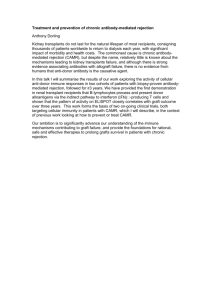
![Immune Sys Quiz[1] - kyoussef-mci](http://s3.studylib.net/store/data/006621981_1-02033c62cab9330a6e1312a8f53a74c4-300x300.png)

